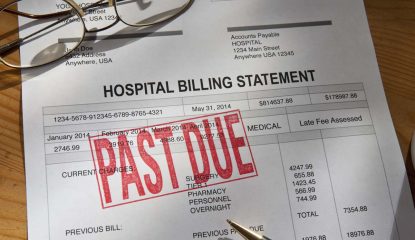Despite Billions in Tax Breaks, Nonprofit Hospitals Neglect Charity Care
By Consumers for Quality Care, on August 10, 2022

While nonprofit hospitals get billions of dollars in tax breaks in exchange for providing charitable support to their communities, a new analysis found that some nonprofit hospitals may only be spending a very small percentage of patient revenue towards charity care.
According to The Wall Street Journal, nonprofit hospitals wrote off in aggregate 2.3 percent of their patient revenue on financial aid for patients’ medical bills, while their for-profit competitors wrote off 3.4 percent, and government hospitals wrote off 4.7 percent. Some nonprofit hospitals devoted less than one percent of their revenue towards charity care.
“The financial assistance programs, the charity care that’s provided, are as important as the actual medical services,” said Ngozi Ezike, president and CEO of Sinai Chicago, which is among the top hospital systems in terms of what they spend on charity care as a percentage of their revenue. “We don’t want limited financial resources to mean limited lifespan,” Dr. Ezike said.
In return for their tax breaks, nonprofit hospitals are supposed to provide charitable benefits to their communities, for example, to underprivileged patients who cannot afford treatment. However, federal guidelines afford hospitals broad freedom in writing and implementing policies for writing off care and don’t require hospitals to meet any specific financial assistance targets.
Many nonprofit hospitals establish restrictive policies that may deny financial aid to patients who can’t afford their care. Some hospitals won’t forgive bills even if a patient’s income is barely above the poverty level. Other hospitals fail to inform patients that they may qualify for financial assistance.
“The policies are wildly different,” said Jared Walker, executive director of patient advocacy group Dollar For. “When people ask, ‘Am I eligible?’ The answer is always, ‘It depends.’”
CQC urges nonprofit hospitals to hold up their end of the bargain to better serve their communities and deliver care for patients when they need it most.




